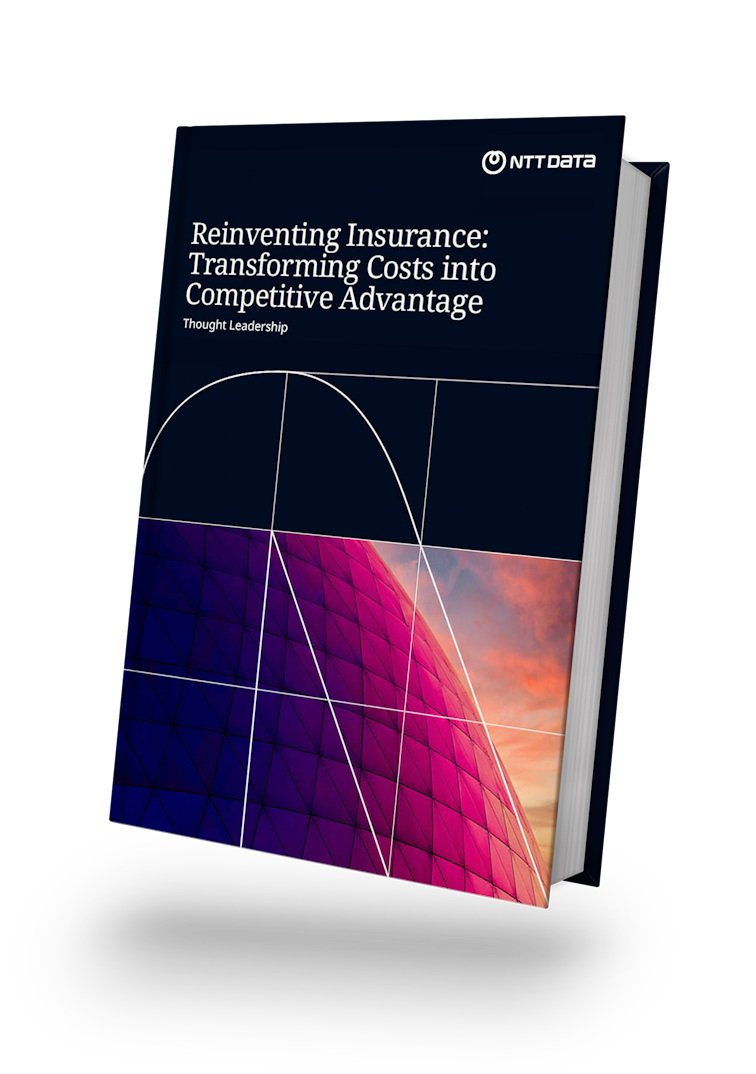
Modernizing Insurance: Ecosystems as the Key in the AI Era
Imagine a world where your insurance operations run intelligently and efficiently, with seamless data flow, AI-driven decision-making, and cost-effective innovation. For insurers, achieving this vision starts with tackling the complexities of managing siloed, legacy systems. The emergence of the AI era amplifies both the urgency and the opportunity to modernize. AI technologies, from predictive analytics to generative models, require integrated data environments and scalable systems to deliver value. The ecosystem approach addresses these challenges and creates a foundation for continuous transformation.
The Challenges of Managing Multiple Insurance Systems
The insurance industry is no stranger to the complexities of managing multiple systems. Here are some of the key challenges that insurers face:
Core modernization is essential for enabling modern systems to integrate seamlessly into an application landscape that is constantly evolving. AI plays a pivotal role in transforming the code base into a more interfaceable technology, capable of operating in cloud-based or hybrid environments, particularly through enhanced API interface capabilities. As carriers increasingly seek ways to modernize their core systems, this effort significantly strengthens the ecosystem's ability to adapt and thrive while keeping the core light.
Integration Nightmares: connecting disparate systems to ensure seamless data flow is a daunting task. The lack of interoperability not only hinders operations but also limits the effectiveness of AI tools that rely on unified, clean data. For example, a predictive underwriting model is only as good as the data it draws from.
Data Silos: Isolated systems create data silos that restrict AI's ability to generate holistic insights. Without access to complete, real-time data, AI tools cannot deliver accurate predictions, risk assessments, or customer personalization.
Maintenance and Support Overload: Managing multiple systems places a heavy burden on IT departments. Each system requires specialized skills, leading to higher costs and an increased risk of system failures. The strain on IT resources can divert attention from strategic initiatives and hinder the insurer's ability to respond to market changes. A small insurer might find itself with a small IT team struggling to keep up with the demands of multiple systems. In the AI era, where rapid iteration and model retraining are critical, this lack of agility can become a significant disadvantage.
Regulatory Compliance Headaches: Ensuring compliance with diverse and ever-evolving regulations is a complex task, especially for global insurers. AI systems add another layer of scrutiny, requiring transparency and explainability. The need to maintain compliance across multiple systems can be overwhelming, leading to potential legal and financial risks. For instance, a global insurer might face fines and legal action if a new regulation is not implemented correctly across all its systems.
Lack of agility: Reliance on multiple disparate systems hinders rapid adaptation to market changes and the timely introduction of new products or services. Rigid architectures prevent insurers from adopting new AI tools and responding quickly to market shifts. Competitors with flexible ecosystems can launch AI-powered products and services at speed, leaving legacy insurers behind.

The Ecosystem Approach: A Strategic Solution for the AI Era
To address these limitations, a strategic shift towards an ecosystem approach is recommended. This involves moving from monolithic core systems to a flexible architecture centered around a lightweight core and integrated, often AI-enabled, best-of-breed solutions.
AI-Driven Agility: A modular ecosystem enables faster implementation of new AI tools and services. Updates can be made to individual components without the need for extensive system overhauls, allowing insurers to respond more quickly to market changes and customer needs. For example, insurers can integrate an AI-based fraud detection system without overhauling their entire platform.
Enhanced cost-effectiveness: Deploying specialized AI solutions tailored to specific needs is often more cost-effective than using one large, comprehensive system. This approach reduces both initial investment and ongoing maintenance costs, making it a more sustainable solution for insurers. A mid-sized insurer might save thousands of dollars by using a specialized claims management system instead of a comprehensive one.
Scalability and Flexibility: The modular nature of an ecosystem makes scaling easier. Additionally, AI models thrive in scalable environments where data and computing power can expand as needed. Insurers can add or remove components as needed, adapting smoothly to market demands and growth without significant disruptions. This flexibility is crucial in a dynamic industry like insurance. For instance, an insurer can easily add a new underwriting module to support a new line of business.
Continuous Innovation: The ecosystem approach fosters innovation by allowing insurers to leverage cutting-edge technologies from various providers. This leads to improved products, better customer experiences, and enhanced operational efficiency. According to NTT DATA's Global GenAI report, 81% of insurers plan to make a significant investment in GenAI in the next two years. The primary motivators for this investment include improving customer experience, growing revenue, and enhancing business intelligence, among others. Ecosystems allow insurers to experiment with emerging AI technologies without jeopardizing existing operations. By integrating AI-powered chatbots, advanced analytics, and risk assessment engines, insurers can stay ahead of the curve.
Building a Successful Ecosystem in the AI Era
Creating a high-performing ecosystem requires careful planning and execution. Here are some key steps to consider:
Strategic partner selection: Carefully choose reliable and secure technology providers with proven AI capabilities whose offerings align with your overall insurance strategy. The right partners can provide the specialized solutions needed to address specific business challenges and drive innovation. For example, partnering with a leading data analytics firm can help an insurer gain deeper insights into customer behavior.
Robust integration strategy: Establish a well-defined integration strategy to ensure seamless data flow between components using APIs and middleware. This is critical for training and operating AI models that depend on unified data. A robust integration framework will prevent data silos and ensure that all systems work together harmoniously, reducing the time and cost of system updates. When asked about the alignment of their organization's GenAI · strategy with their IT Infrastructure strategy, insurance executives responded as follows: 16% plan to align, 29% are partially aligned, and 55% are fully aligned. This highlights the importance of integrating AI initiatives with existing IT infrastructure to maximize effectiveness and drive meaningful business outcomes. It shows the need for a cohesive approach to AI integration.
Comprehensive data governance and security: Implement robust data governance and strong security measures to protect sensitive customer information across all systems. Good AI depends on good data. Data governance ensures that data is accurate, consistent, and accessible, while strong security measures safeguard against data breaches and other cyber threats. Regular audits and compliance checks are essential to maintain data integrity and security.
Effective change management: Execute a comprehensive change management plan to prepare employees and stakeholders for the adoption of new technologies and processes. Change management is critical to ensure a smooth transition and to maximize the benefits of the new ecosystem. Training programs and clear communication can help employees adapt to new systems and processes.

Core System vs. Ecosystem: A Suggested Percentage Split
While the ideal split depends on specific insurer needs and business strategies, a possible distribution might be:
Core System: 30-40%
This comprises essential functions such as policy administration, core data management, basic reporting, and foundational security and compliance features. The core system serves as the backbone of the ecosystem, providing the necessary infrastructure for other components to function effectively. For example, a core system might handle basic policy administration and data management, ensuring that the foundation is solid.
Ecosystem: 60-70%
This includes specialized solutions for underwriting, claims, billing, customer service, fraud detection, and advanced analytics. These components are tailored to specific business needs and can be added or removed as required, ensuring that the ecosystem remains flexible and adaptable. For instance, an insurer might integrate a specialized underwriting tool to improve risk assessment and a customer service chatbot to enhance customer interactions.
Take the First Step and Evaluate Current Systems
As the AI era reshapes insurance, managing multiple systems without a unified strategy is no longer viable. The ecosystem approach—anchored by a lightweight core and surrounded by AI-enabled, best-of-breed solutions—offers the flexibility, As the AI era reshapes insurance, managing multiple systems without a unified strategy is no longer viable.
The ecosystem approach—anchored by a lightweight core and surrounded by AI-enabled, best-of-breed solutions—offers the flexibility, speed, and intelligence insurers need. However, success requires careful planning, strategic partnerships, a commitment to robust integration, and effective change management.
By embracing the ecosystem approach, insurers can navigate the complexities of their industry and position themselves for long-term success.

Subscribe to Our Newsletter
Get the latest insights about Global solutions for leading insurers on your email



